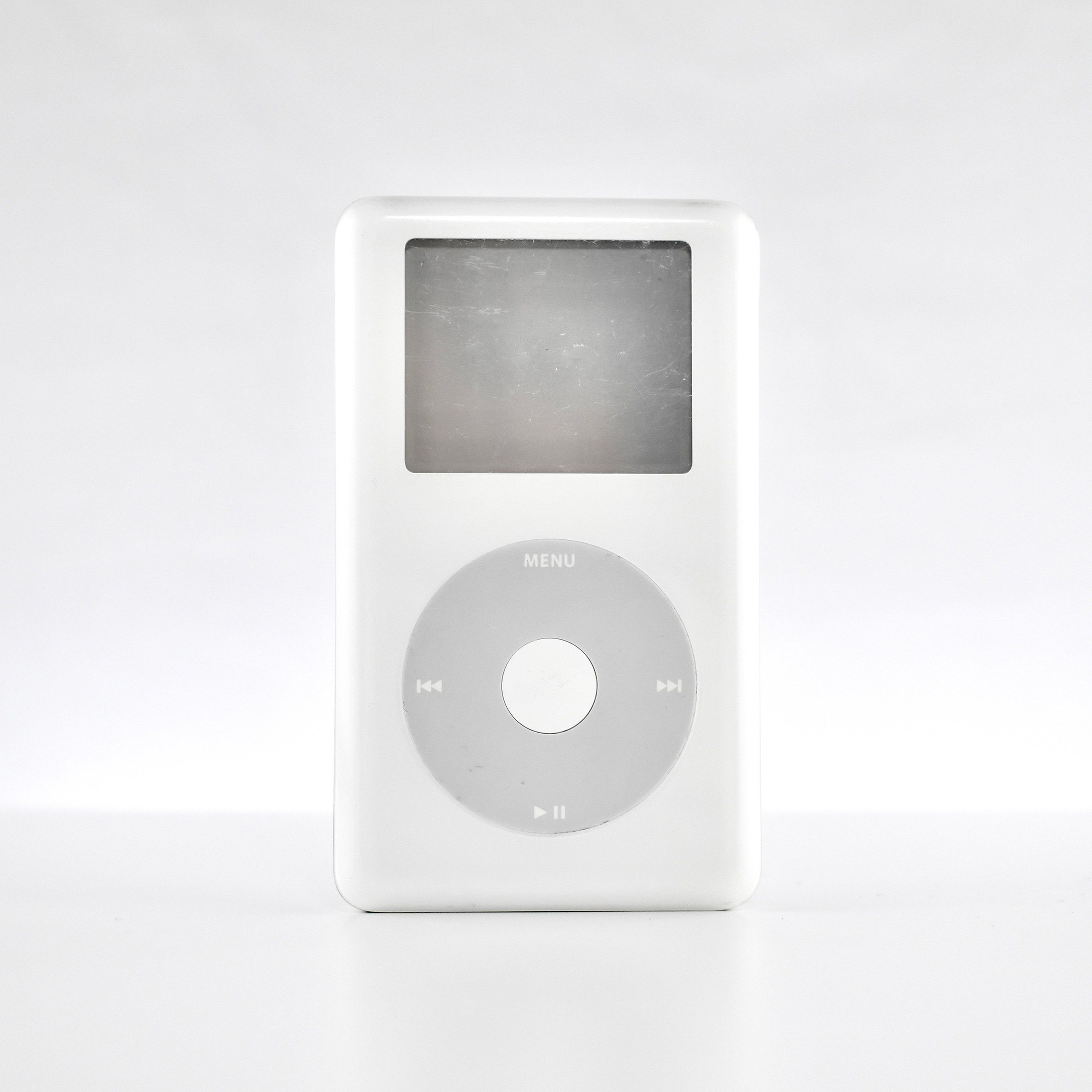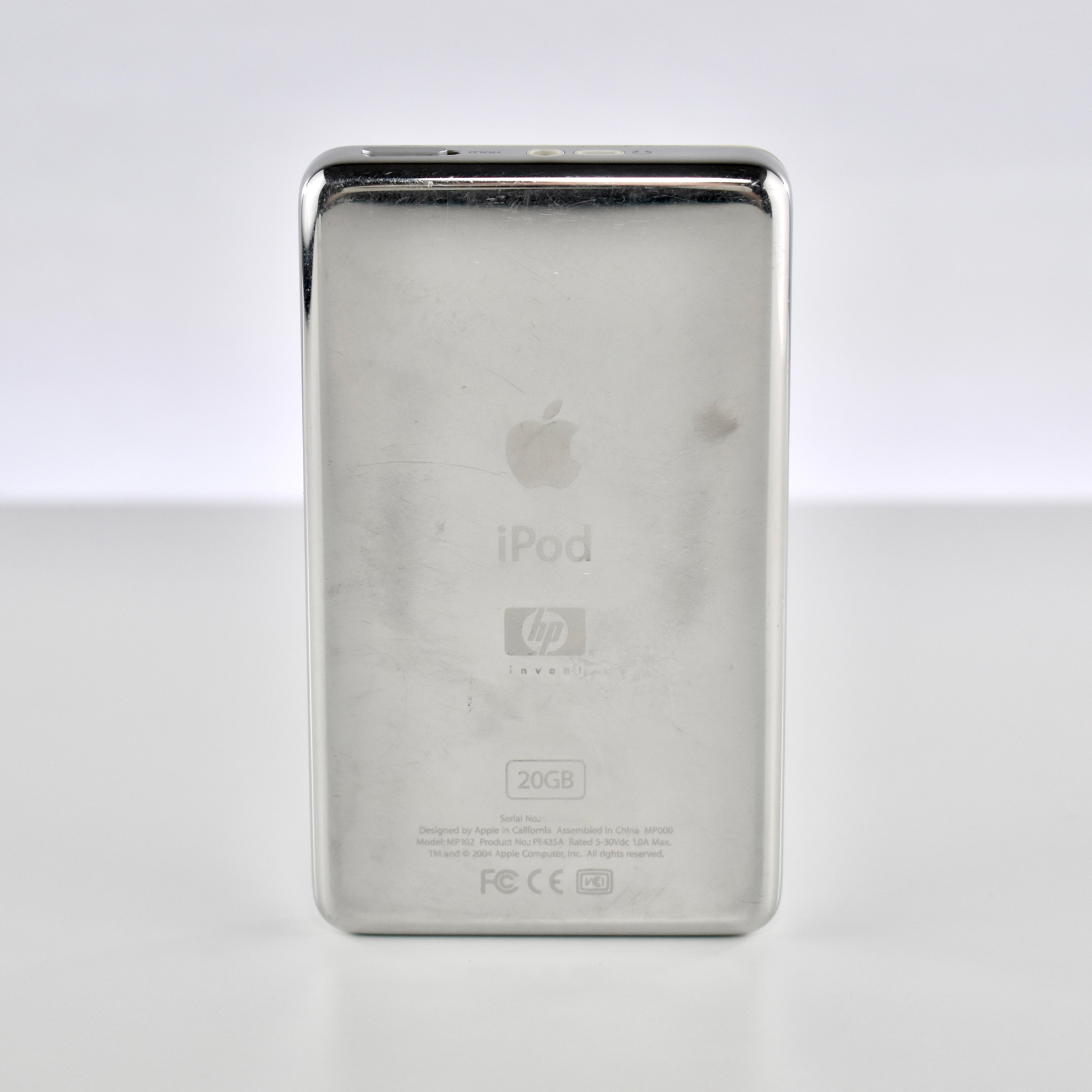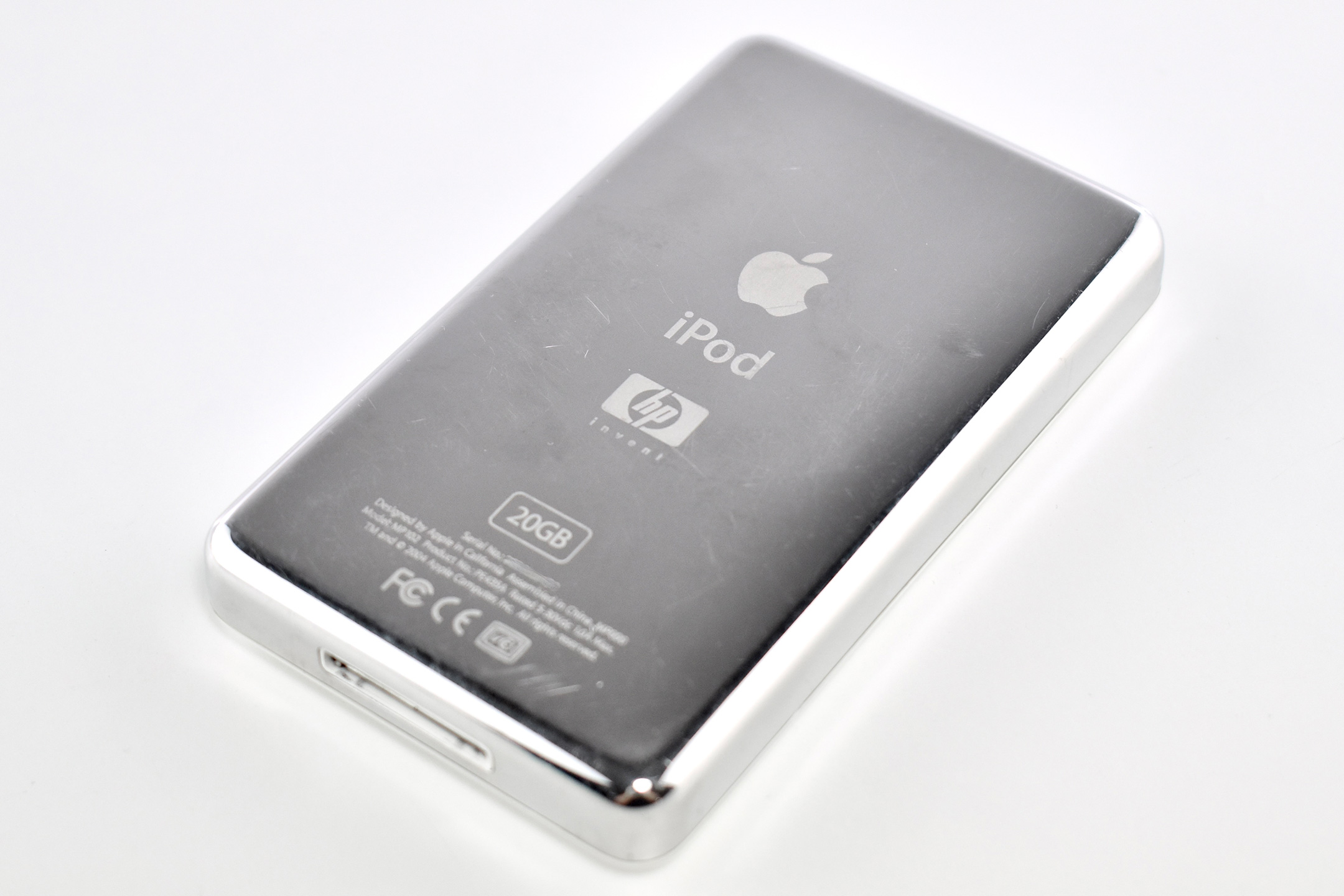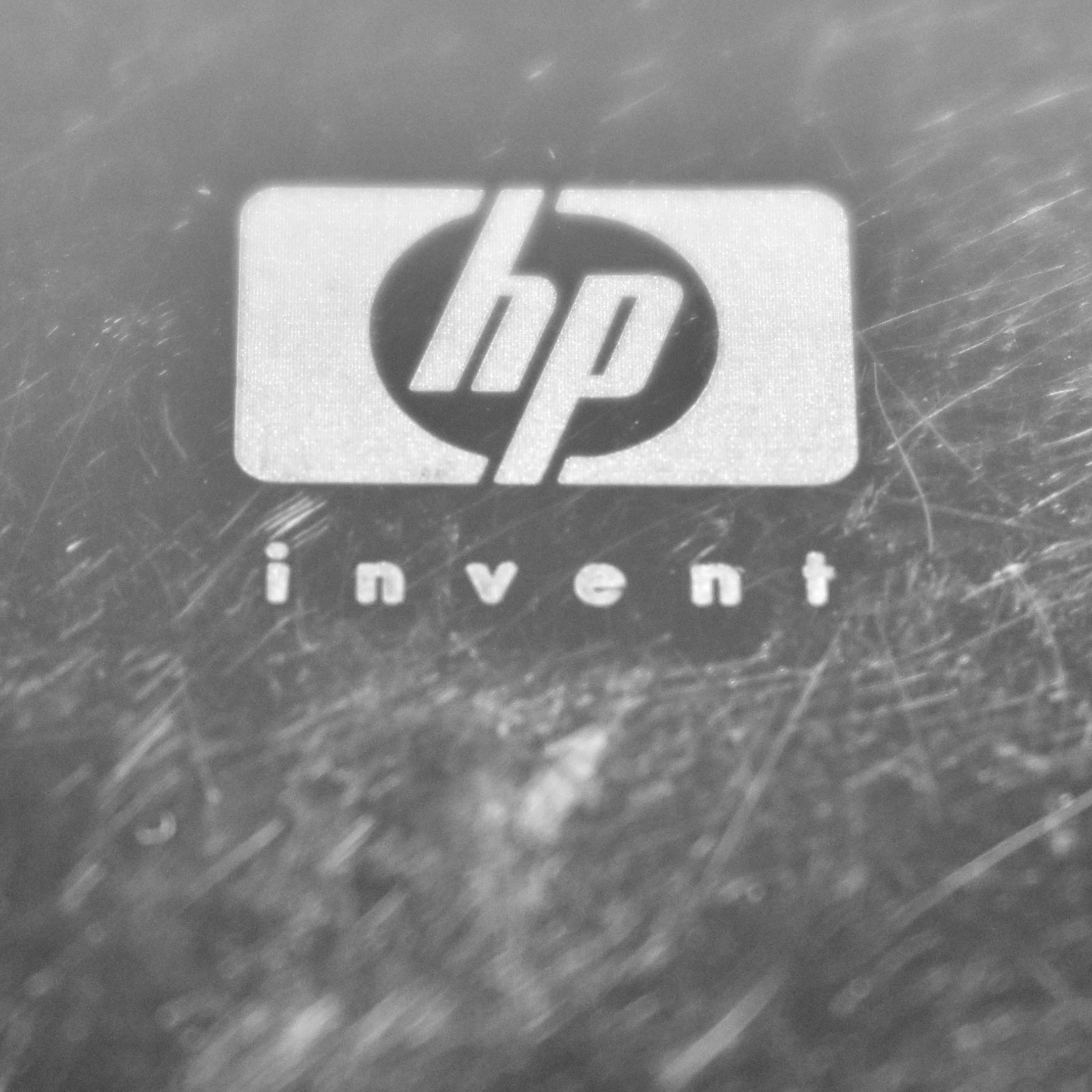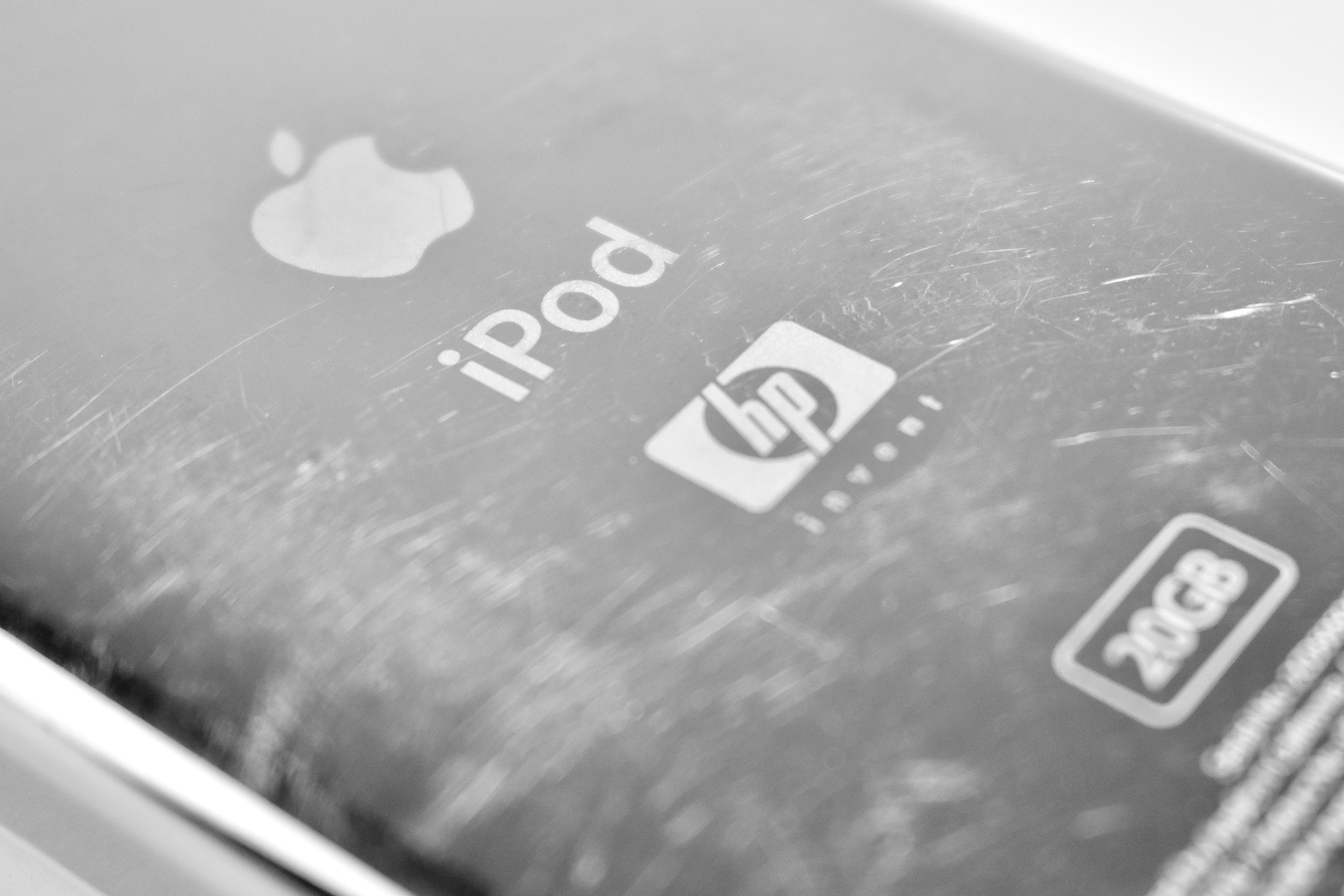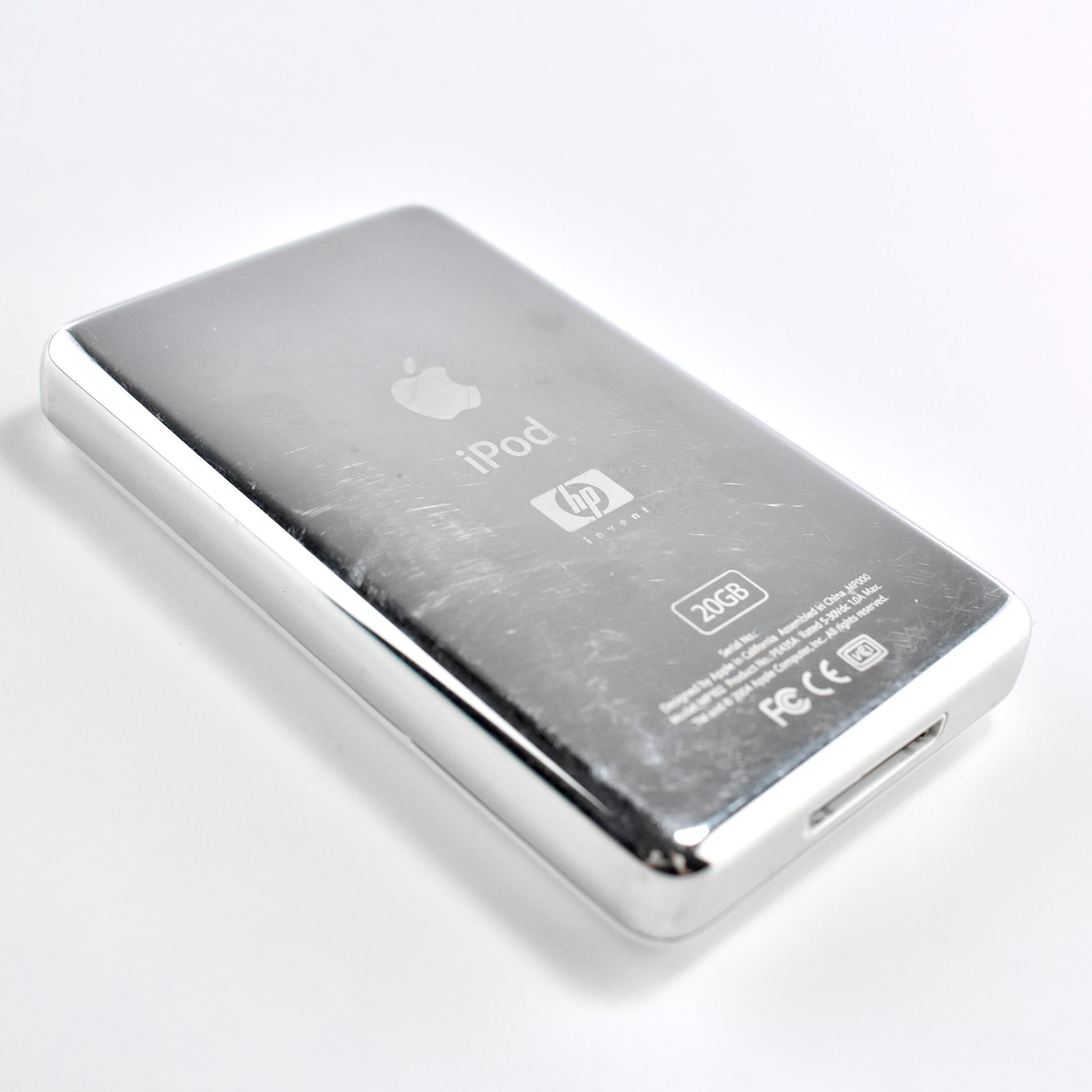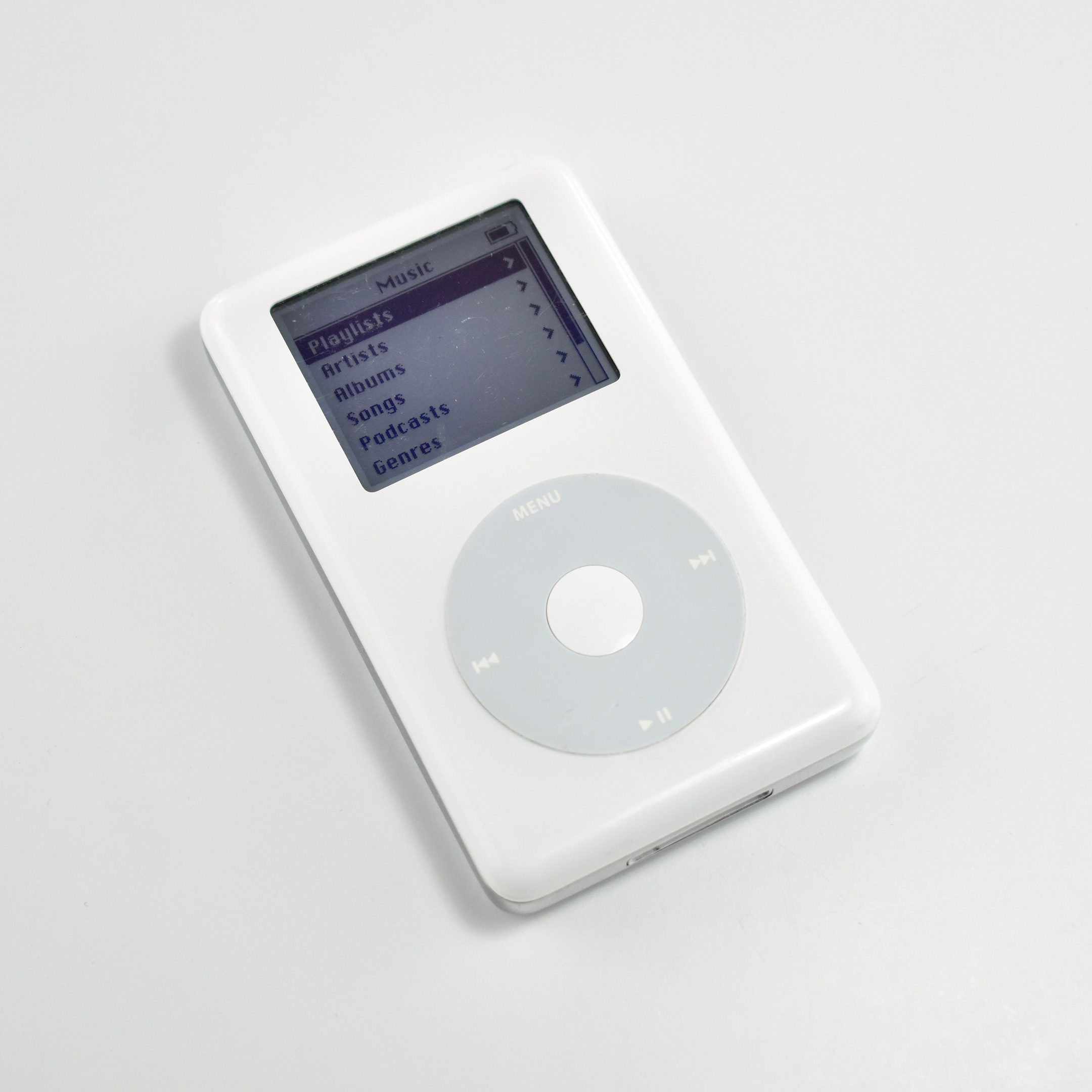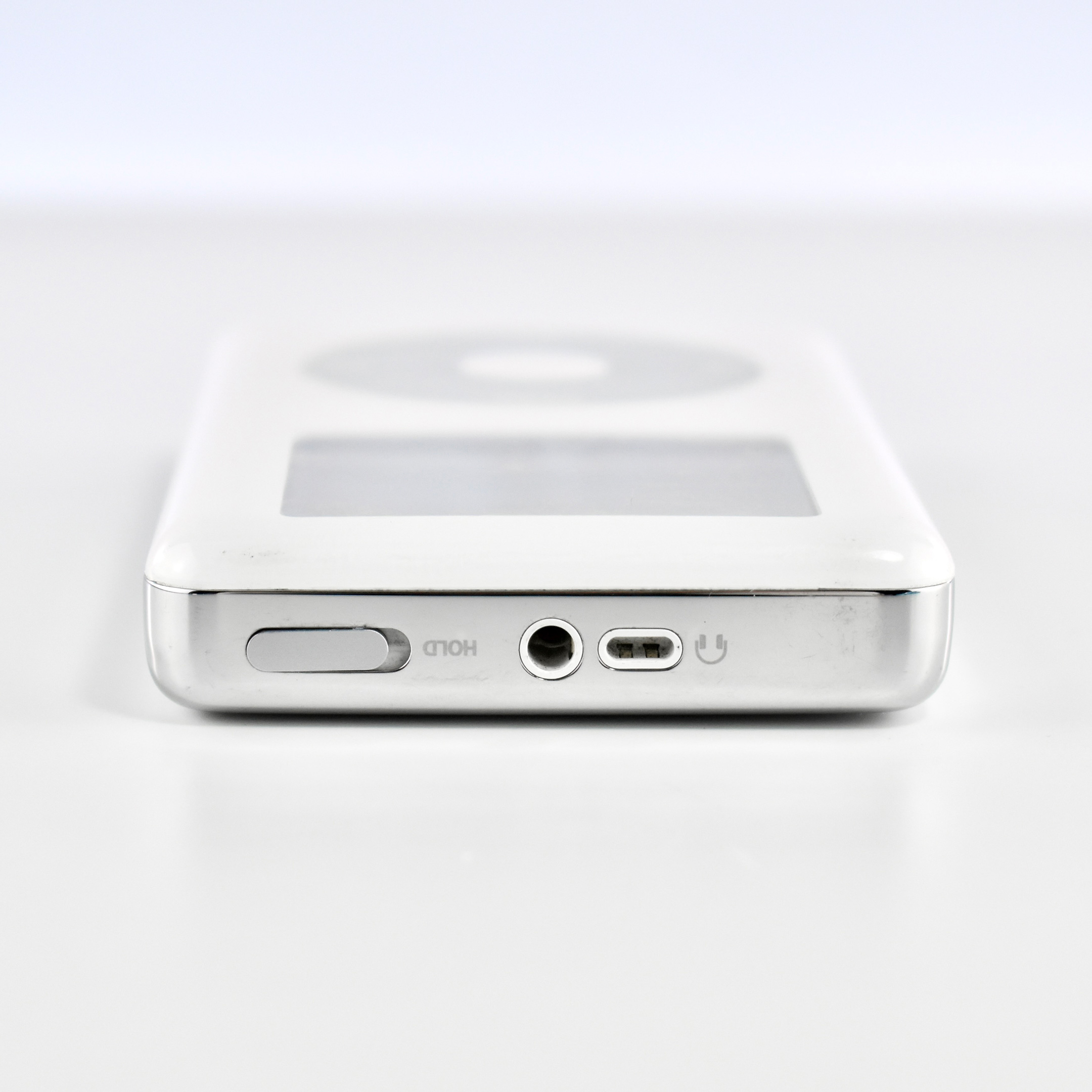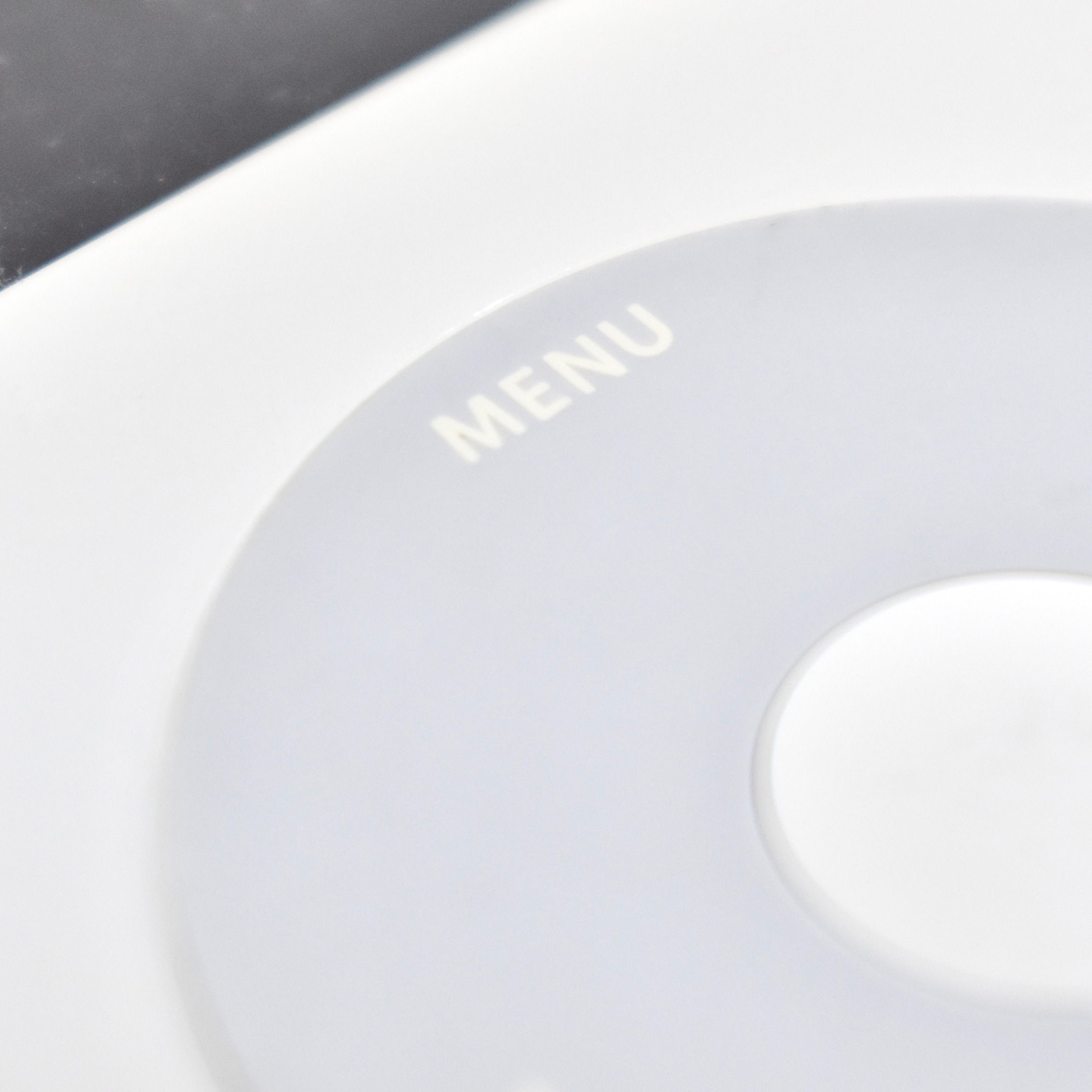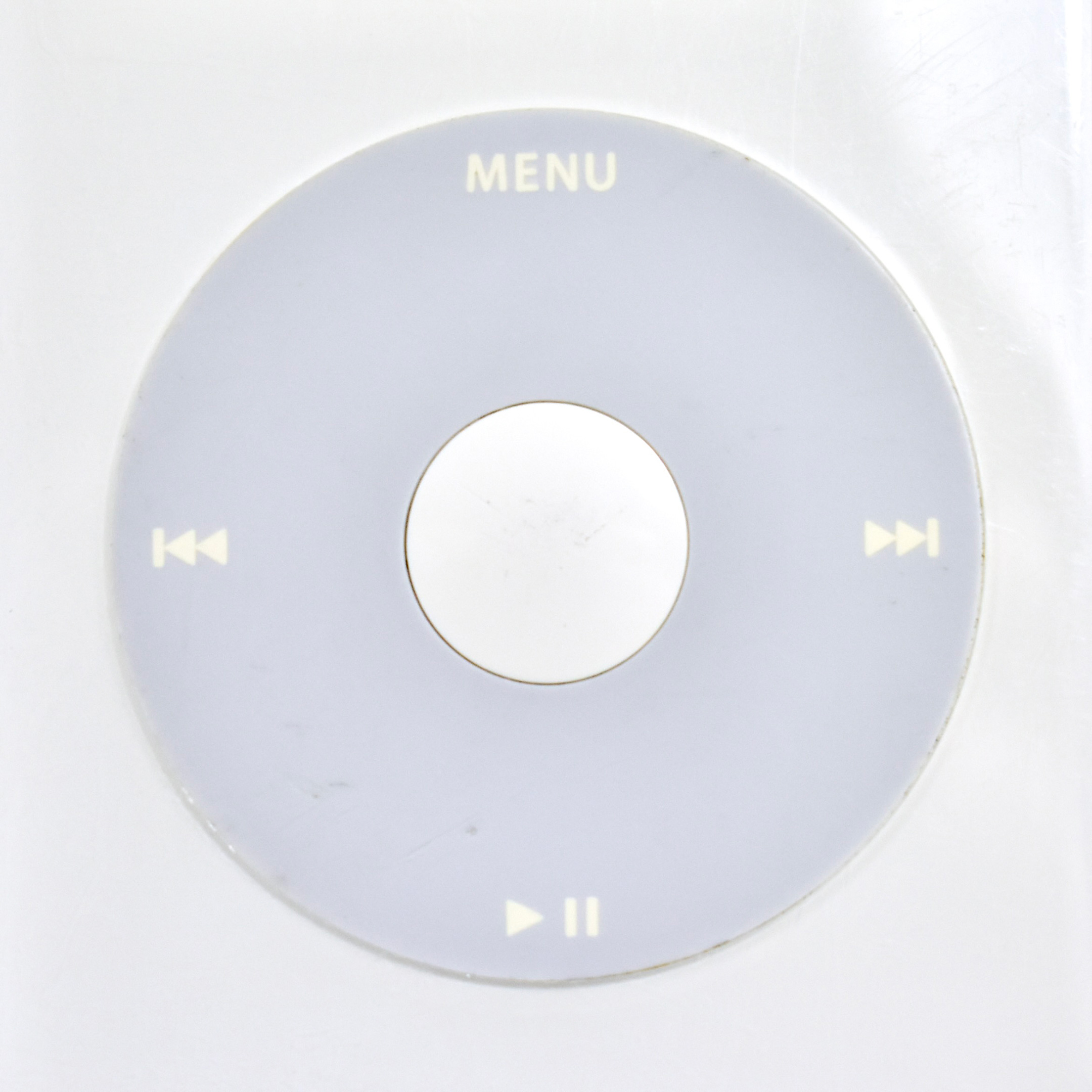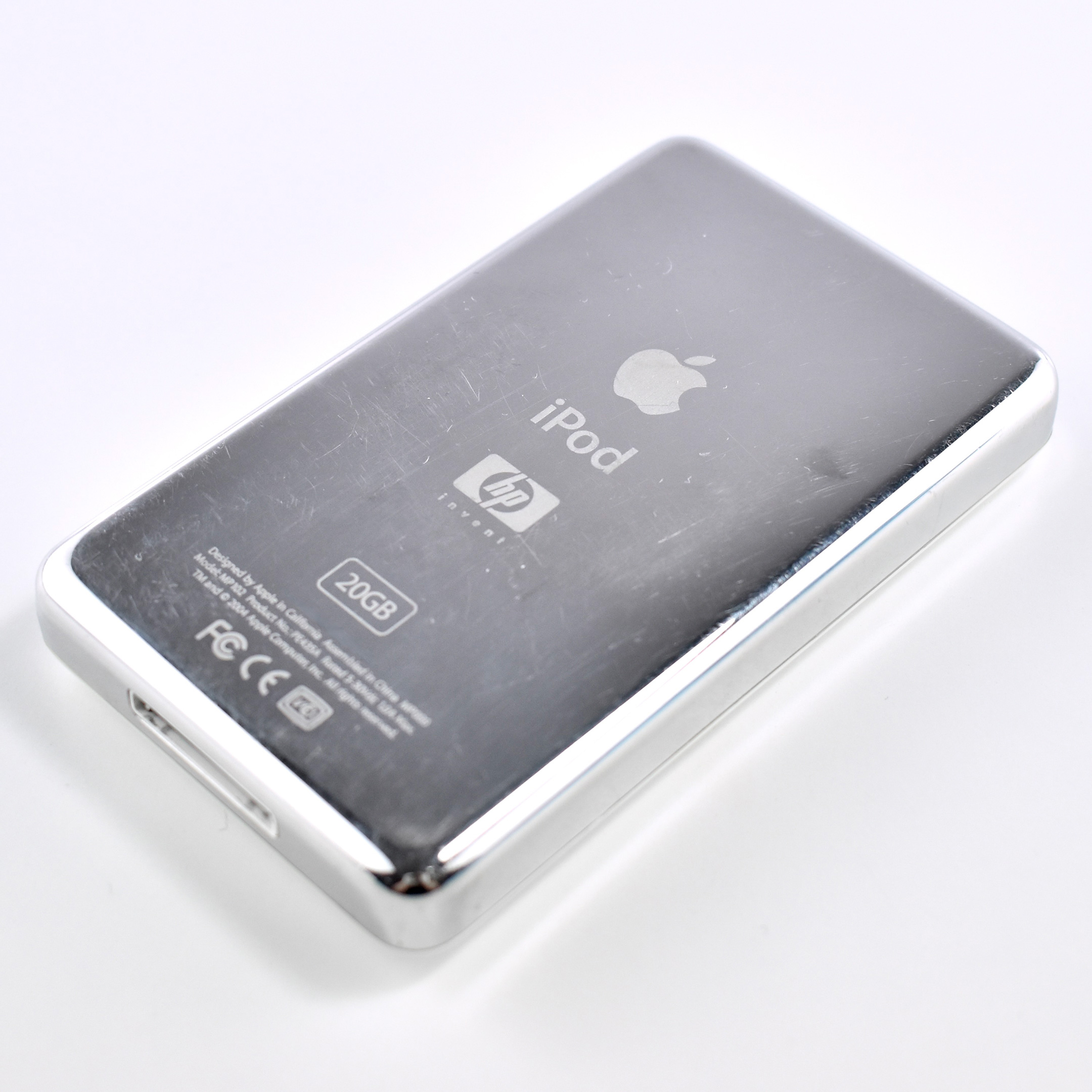This set of white notecards measures 5.5 x 4.25 inches and features a 1-inch embossed Apple logo on the front center. The front of the notecard is bordered by a one.half-inch embossed border.
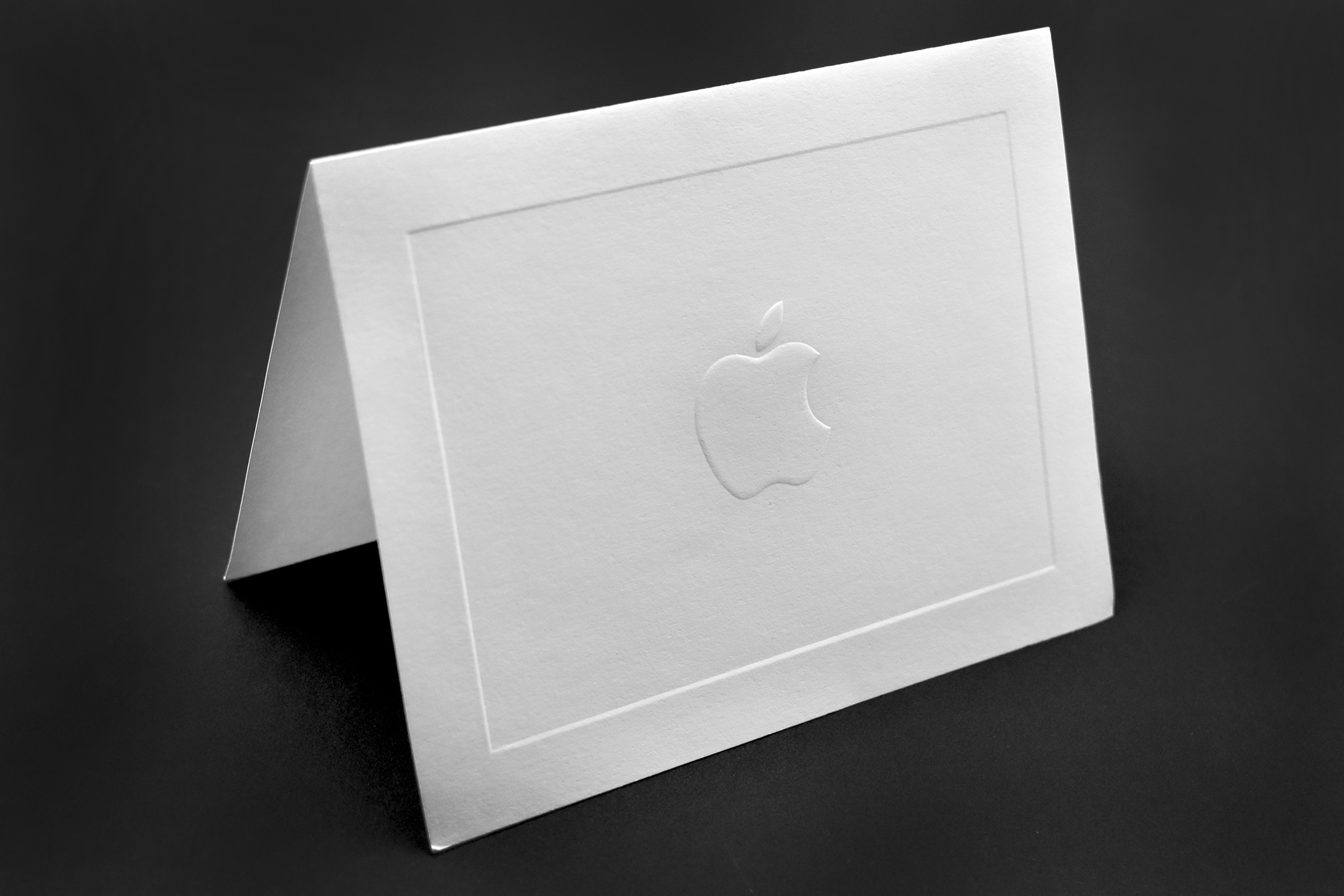
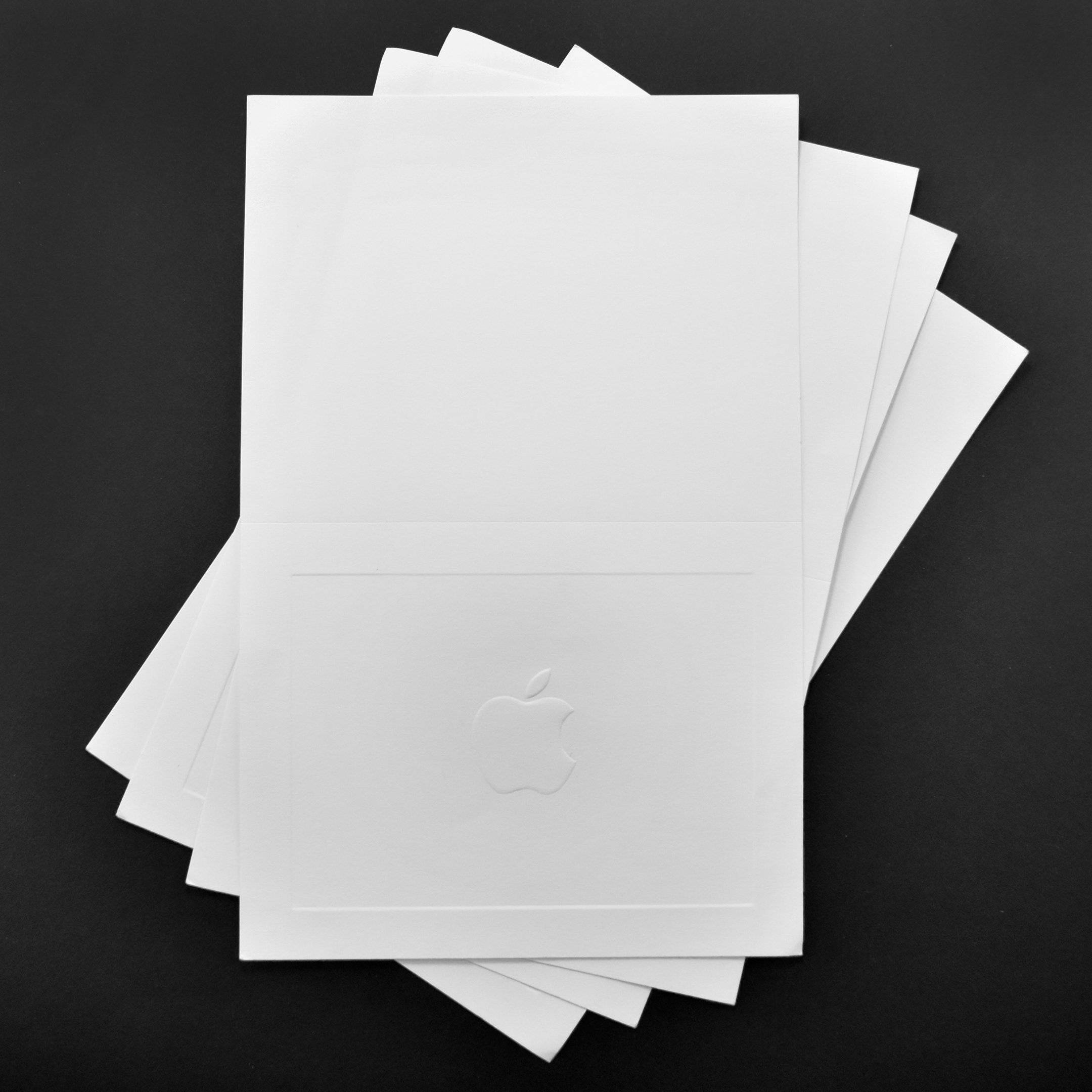
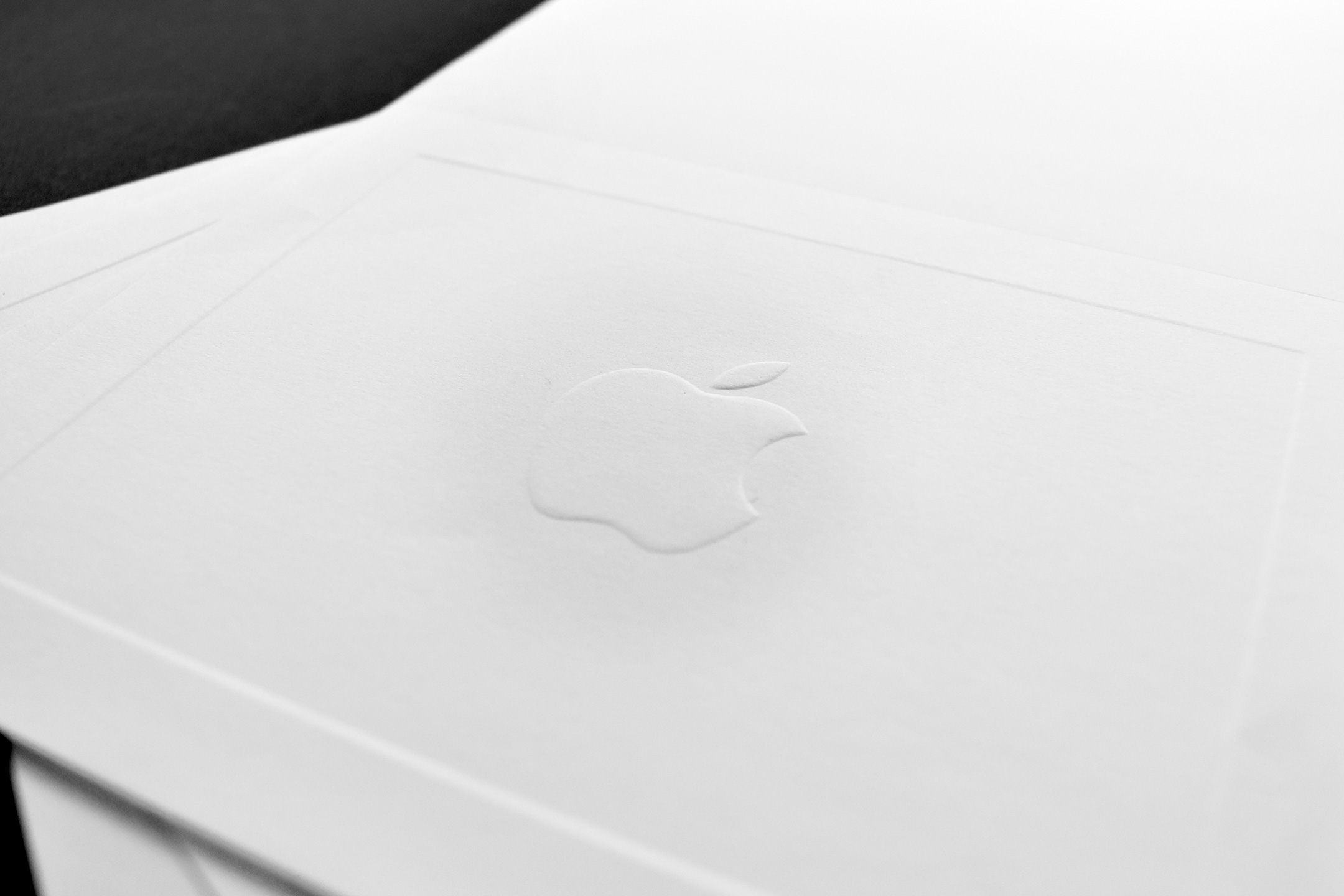
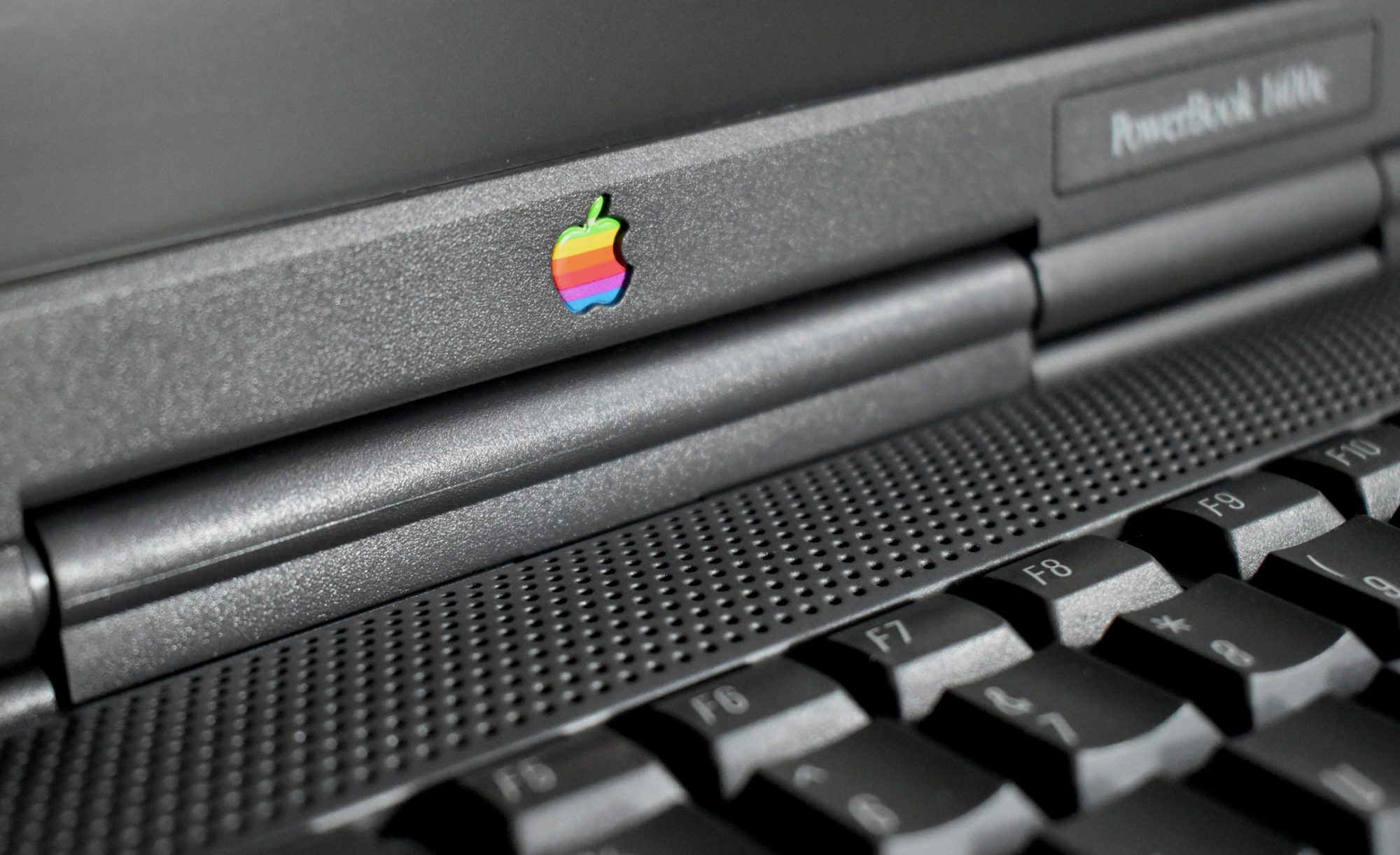
ed tech | design | music
This set of white notecards measures 5.5 x 4.25 inches and features a 1-inch embossed Apple logo on the front center. The front of the notecard is bordered by a one.half-inch embossed border.



At the Macworld Expo in New York CIty on July 19, 2000, Apple announced three new Studio Display designs “in stunning crystal-clear enclosures”—two flat panel displays and this CRT (Cathode Ray Tube) Apple Studio Display.
The displays, designed to complement Apple’s Power Mac G4 Cube and Power Mac G4 professional desktops, shared three distinct features:
“each is powered from the computer, eliminating the need for a separate power cord; each has a two port powered USB hub for convenient connection to desktop USB devices, such as keyboards, USB speakers and digital cameras; and each utilizes the Apple Display Connector, a revolutionary new cable that carries analog and digital video signals, USB data and power over a single cable and features a quick latch connector.”
Steve Jobs noted that “These new beautiful displays perfectly complement our new extraordinary computers. Their innovative design helps clean up desktop cable clutter, and makes set-up a breeze.”
According to Apple’s press release, “The 17 inch (16 inch viewable) Apple Studio Display features a Natural Flat Diamondtron CRT, extraordinarily sharp text and ColorSync internal calibration to keep colors accurate over time. [The] Display…features both futuristic styling and a unique electrical design that supports multiple resolutions at over 100Hz vertical refresh rate.”
The site 512 Pixels provided several additional comments, writing that the “Studio Display (17-inch ADC) was the last standalone Apple display to feature a CRT. At 17.4 inches it was deeper than it was wide. At 45.8 pounds, it was heavier than a iMac G3.” They also comment on the industrial design of the display:
“Instead of hiding the display’s guts inside opaque plastics and metal shield, the 17-inch ADC has a crystal clear case that allows anyone to see the internal workings of the Naturally Flat Diamondtron CRT suspended inside. By revealing all, the Studio Display (17-inch ADC) has nothing to hide. Its transparency and minimalism is pure Apple.”
According LowEndMac, the Apple Display Connector (ADC) used in this display is a proprietary display and data connector developed by Apple. It is a modification of the DVI (Digital Visual Interface) connector that combines analog and digital video signals, USB, and power all in one cable. This connector was used by Apple between 2000–2004.
Sources: Apple Newsroom, 512 Pixels, LowEndMac
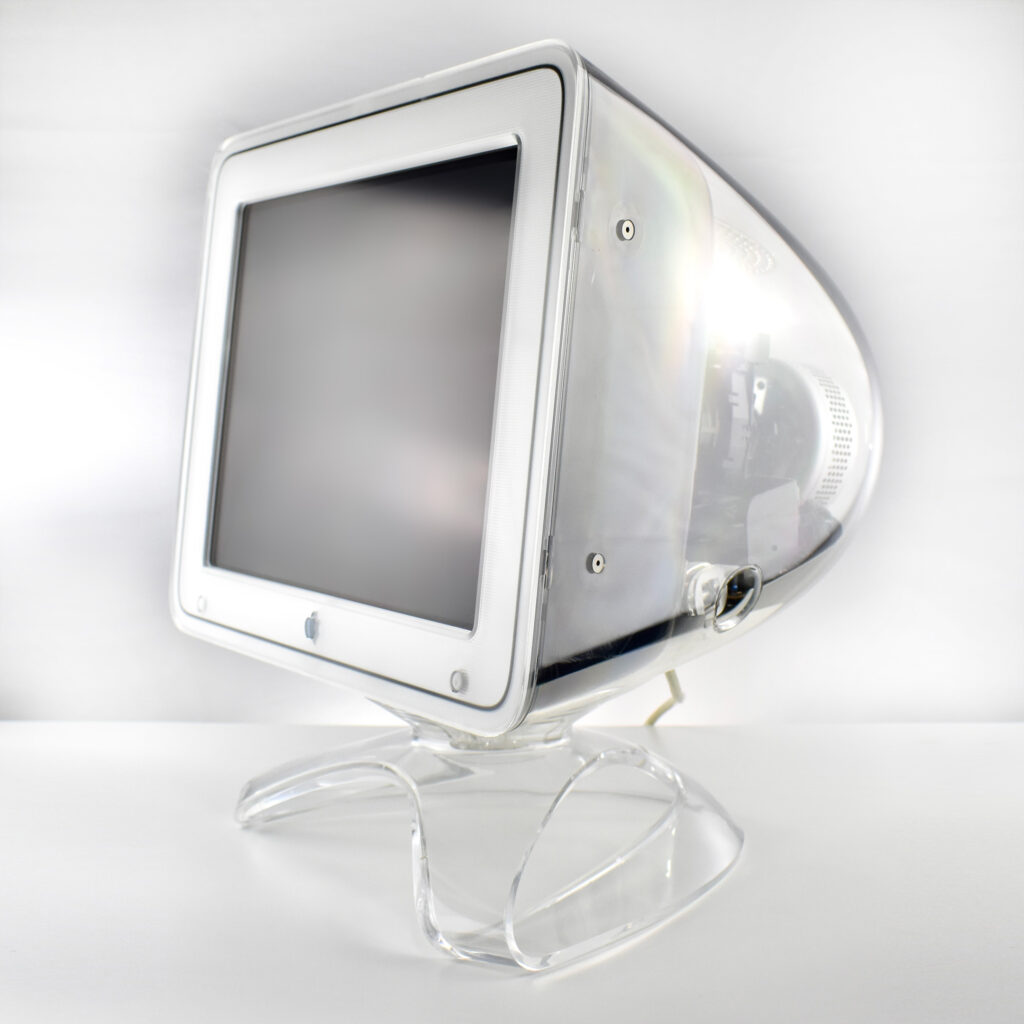
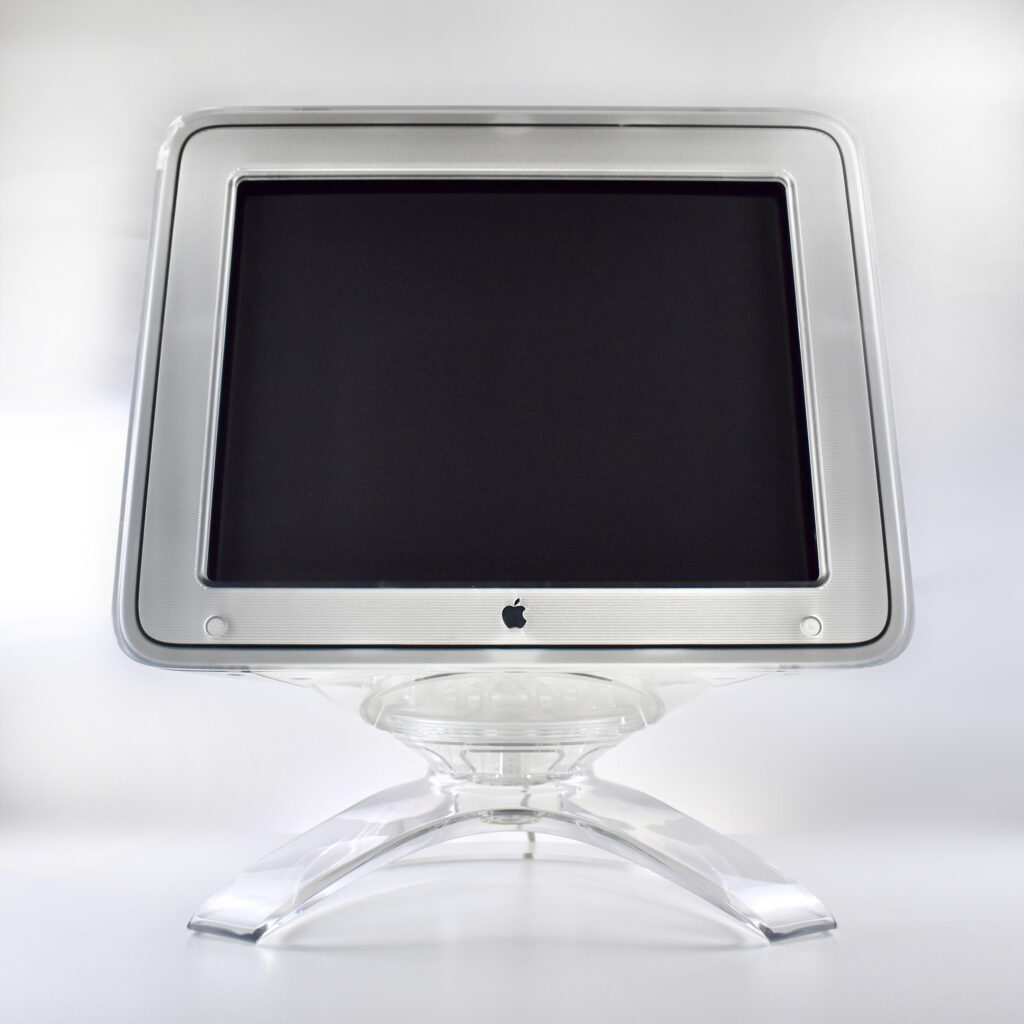
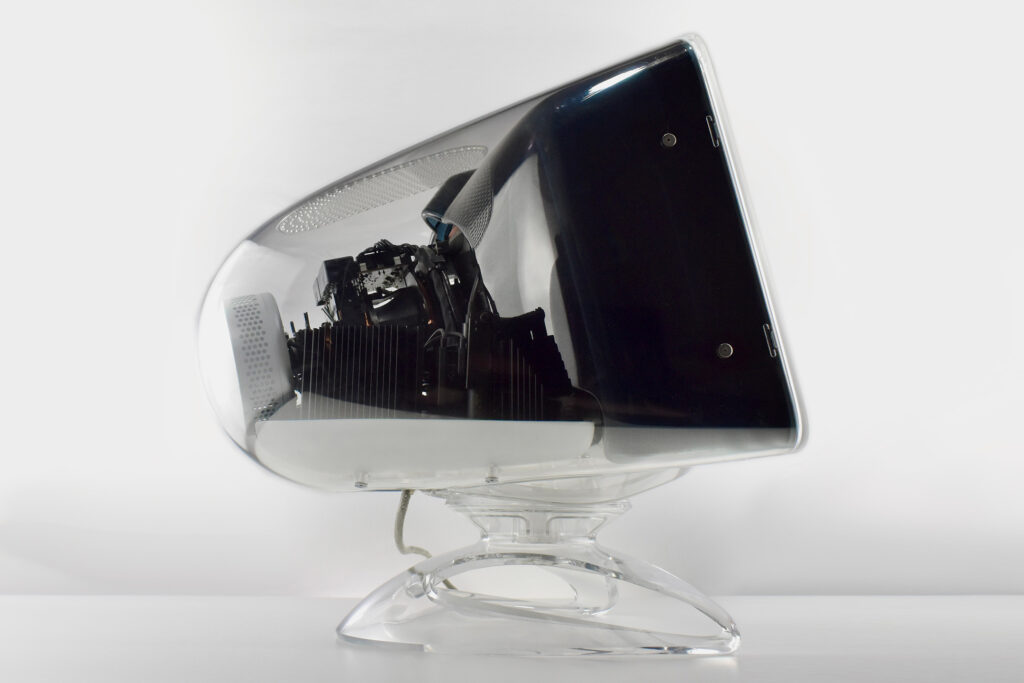
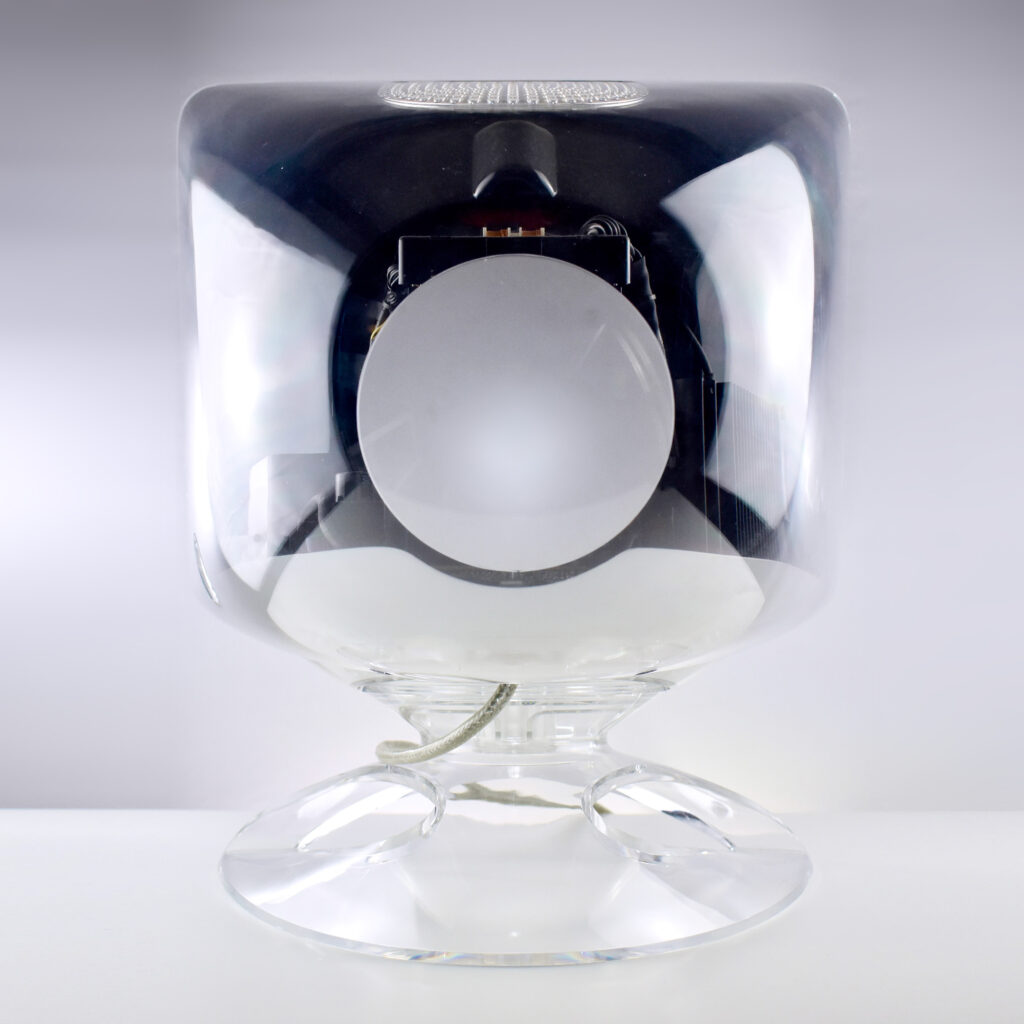
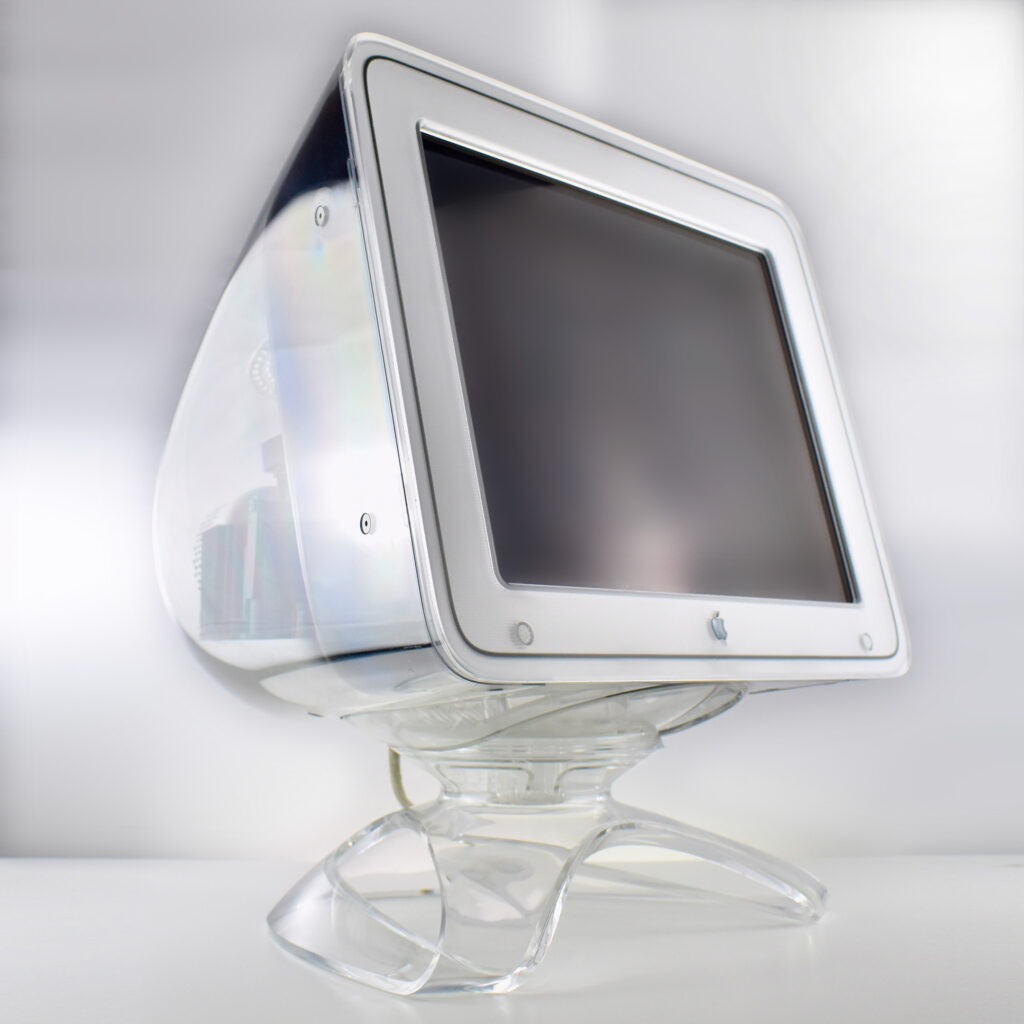
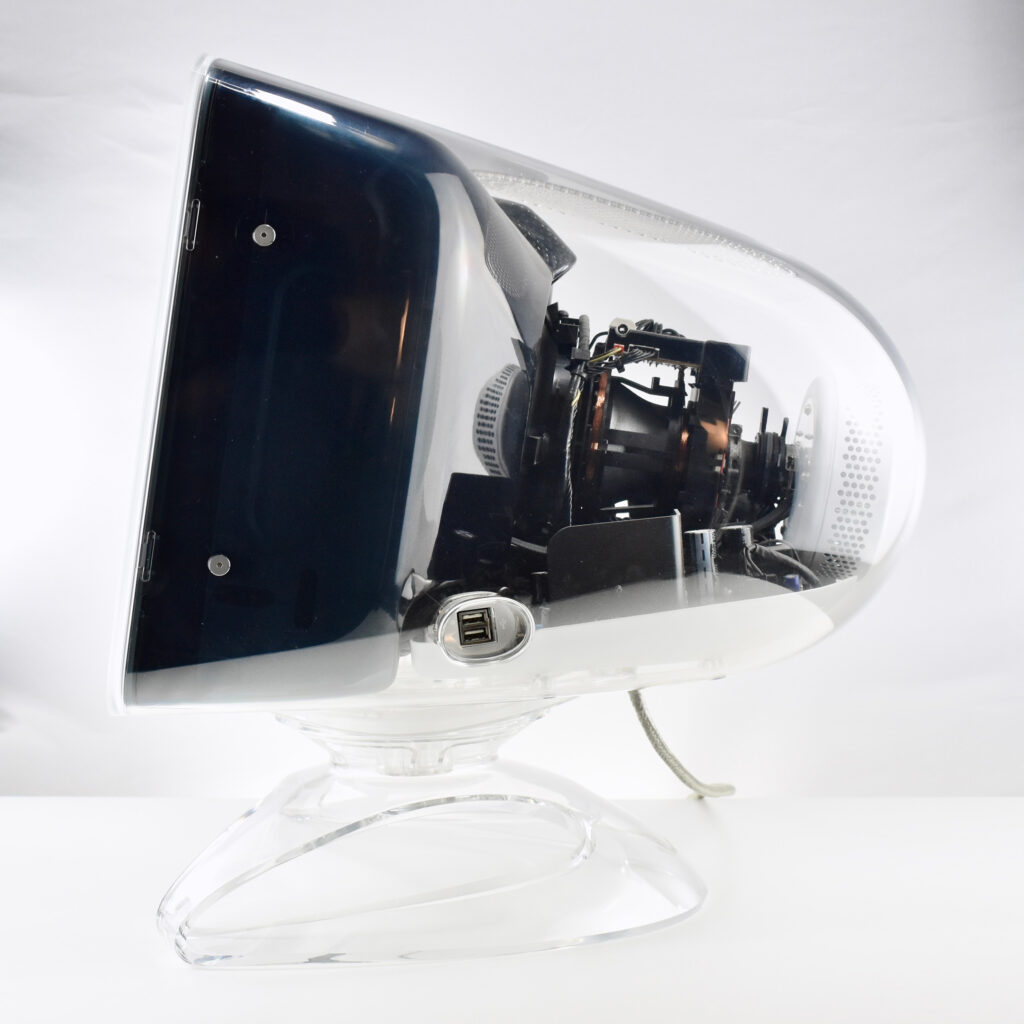

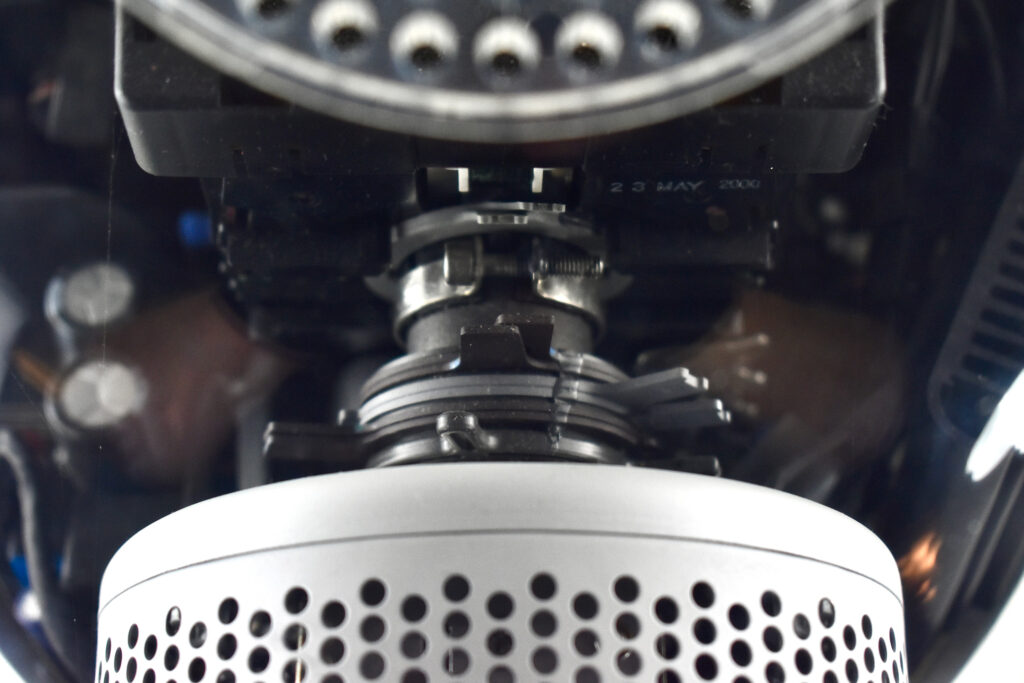
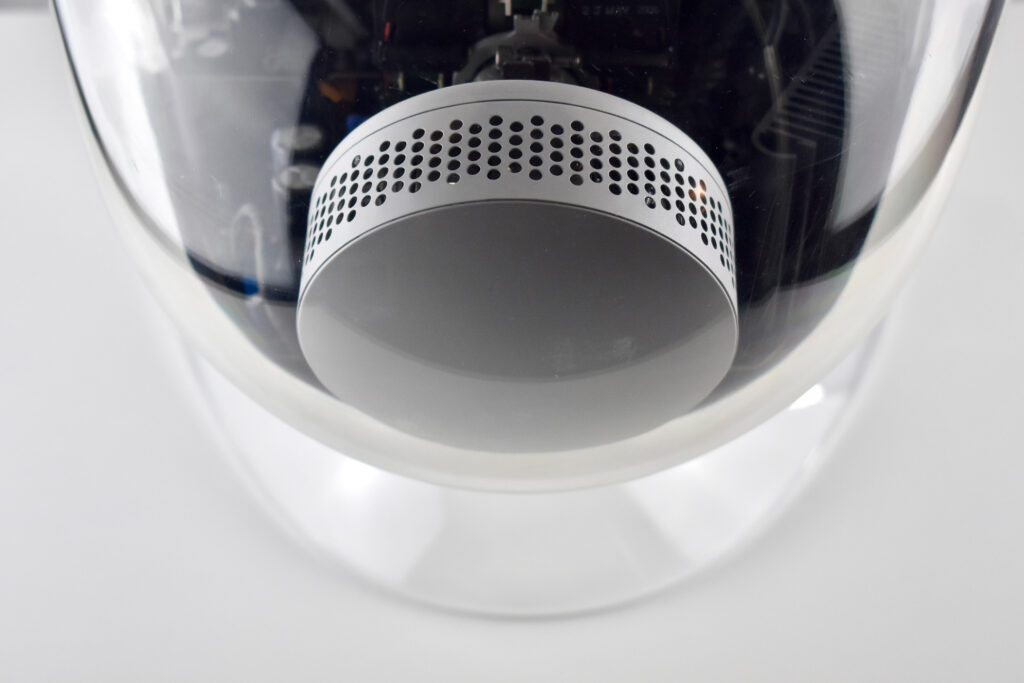
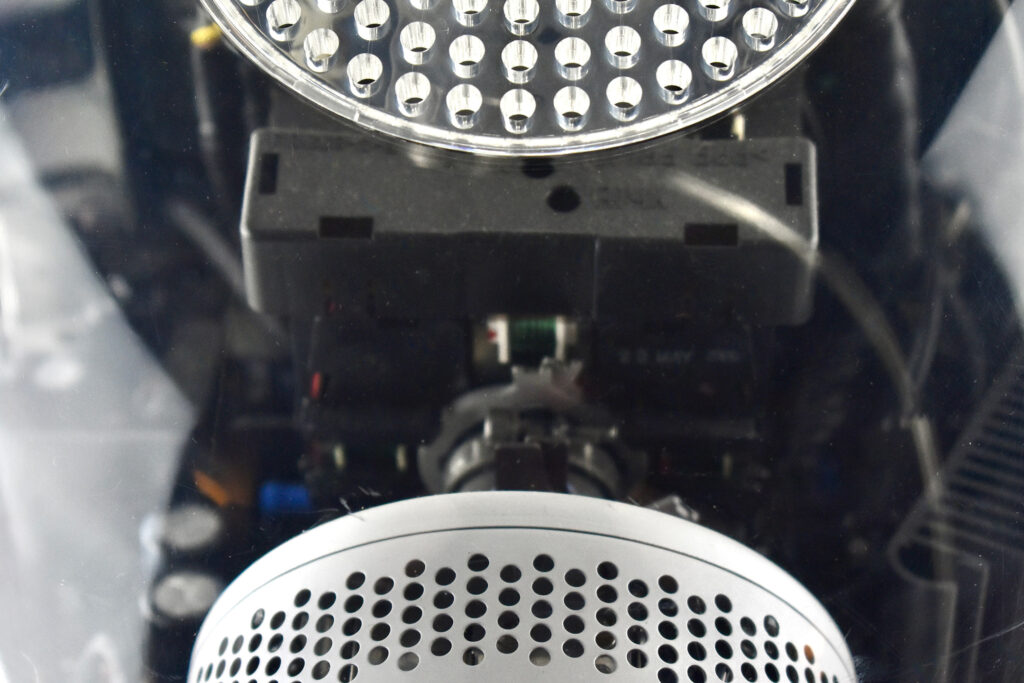



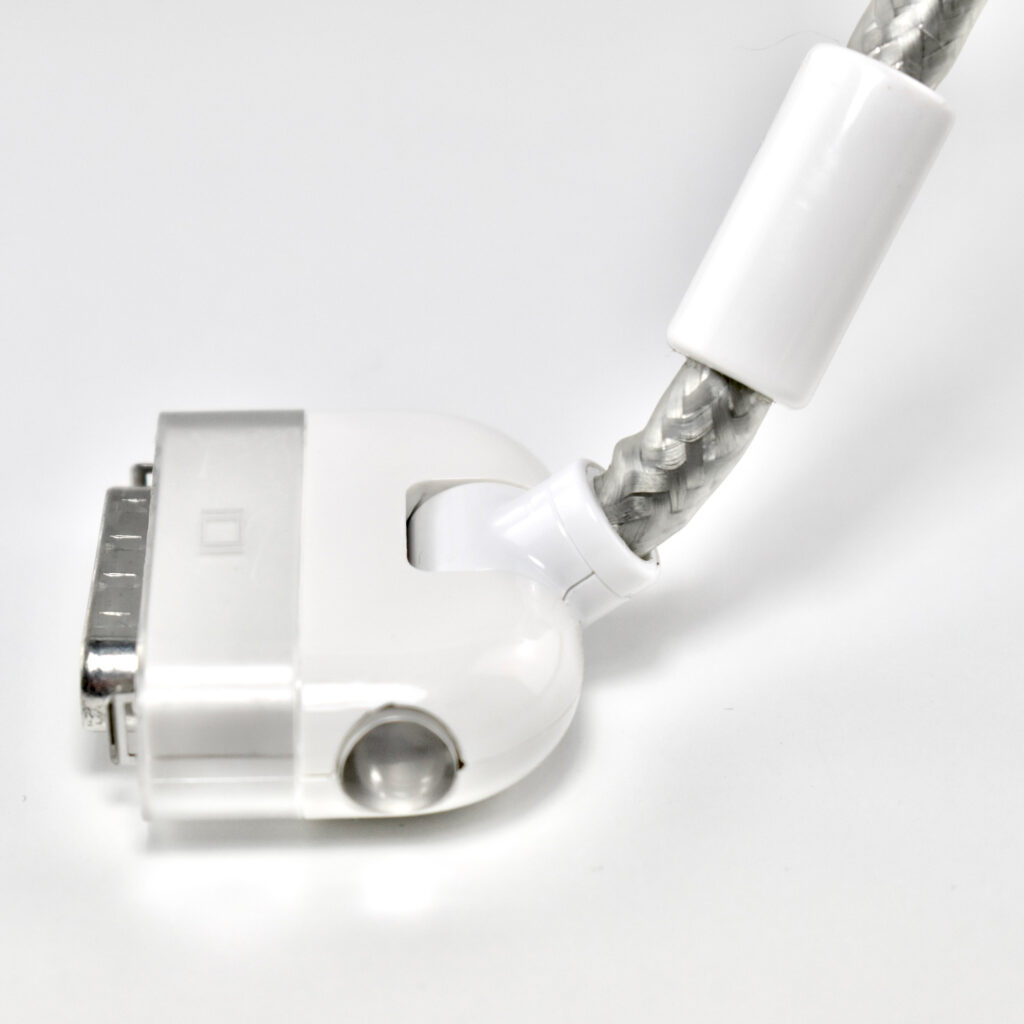
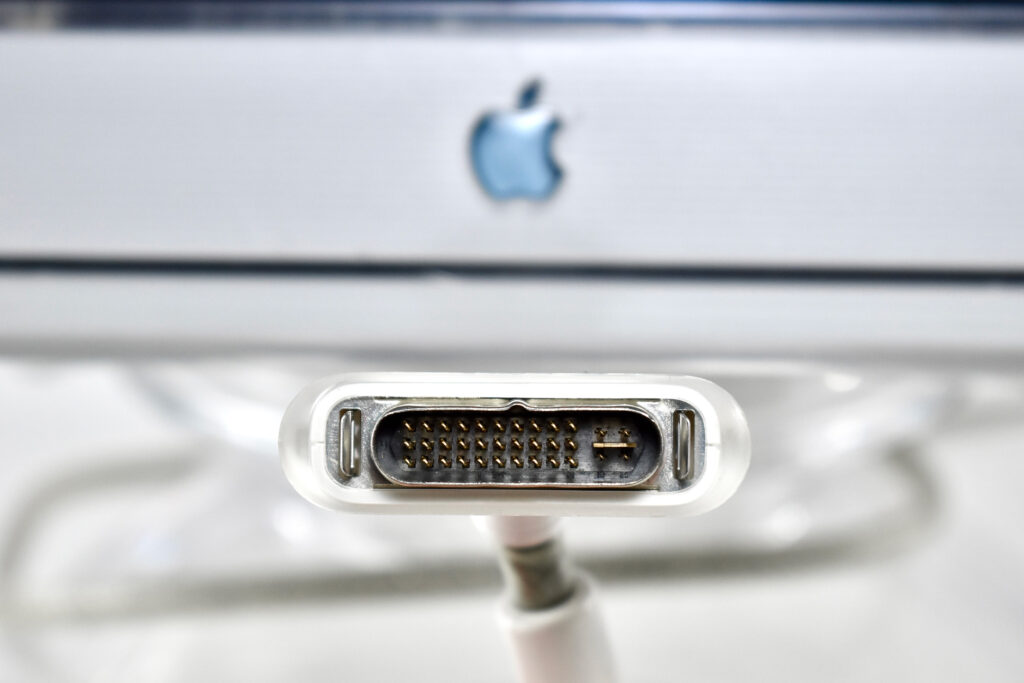
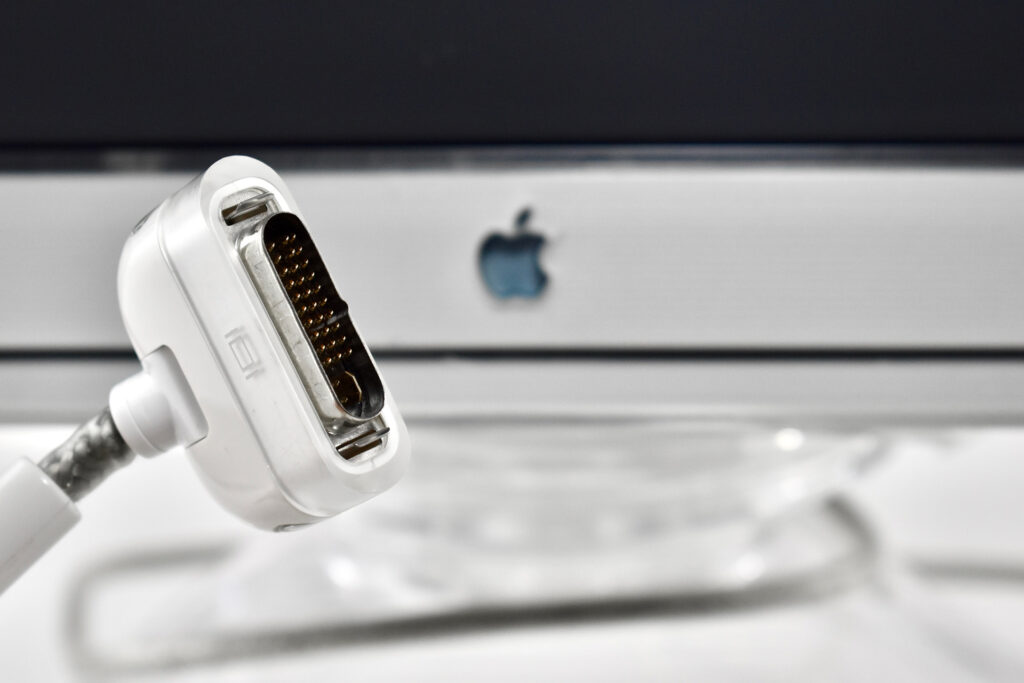
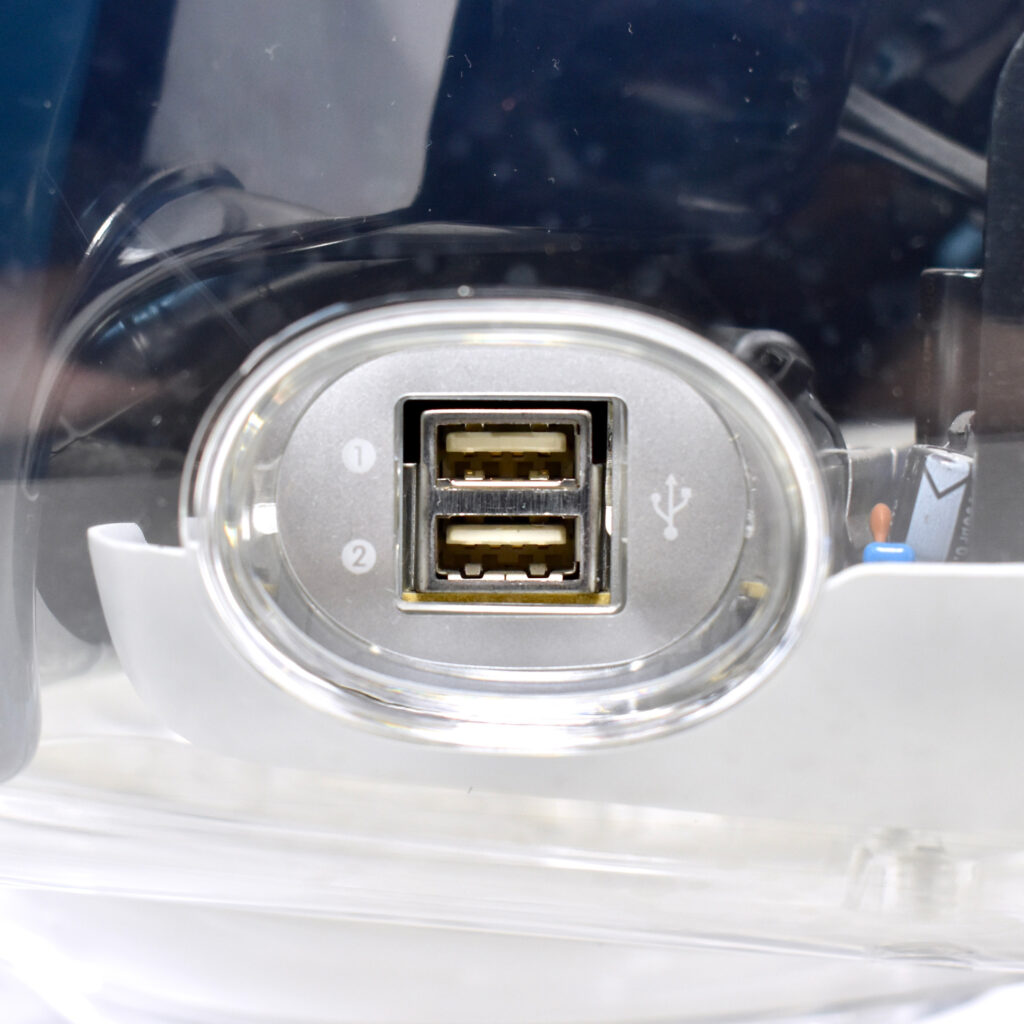
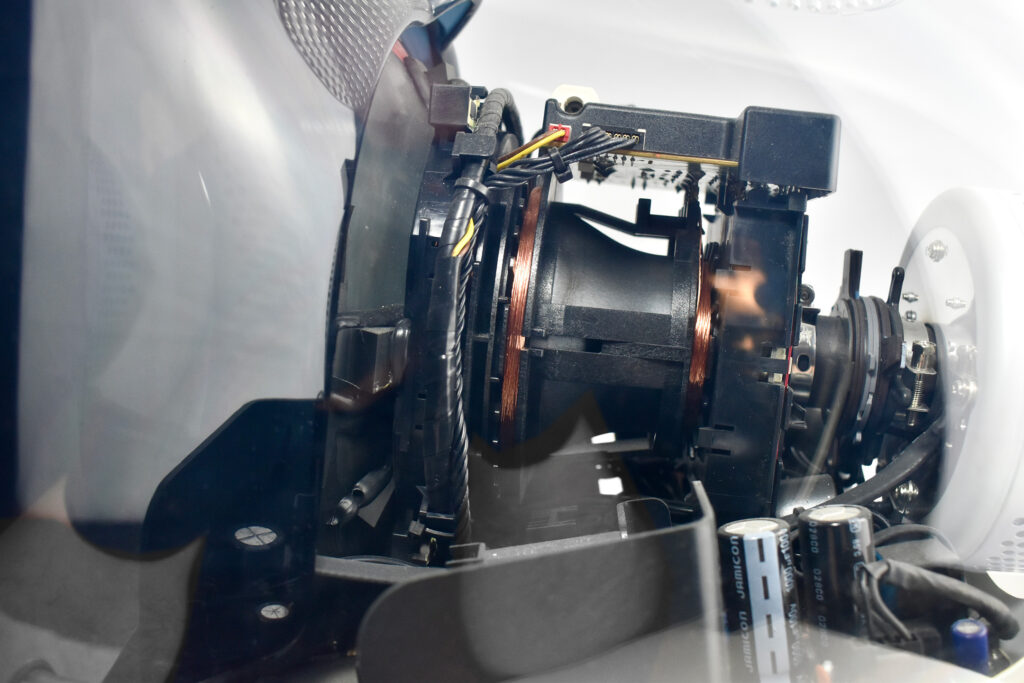
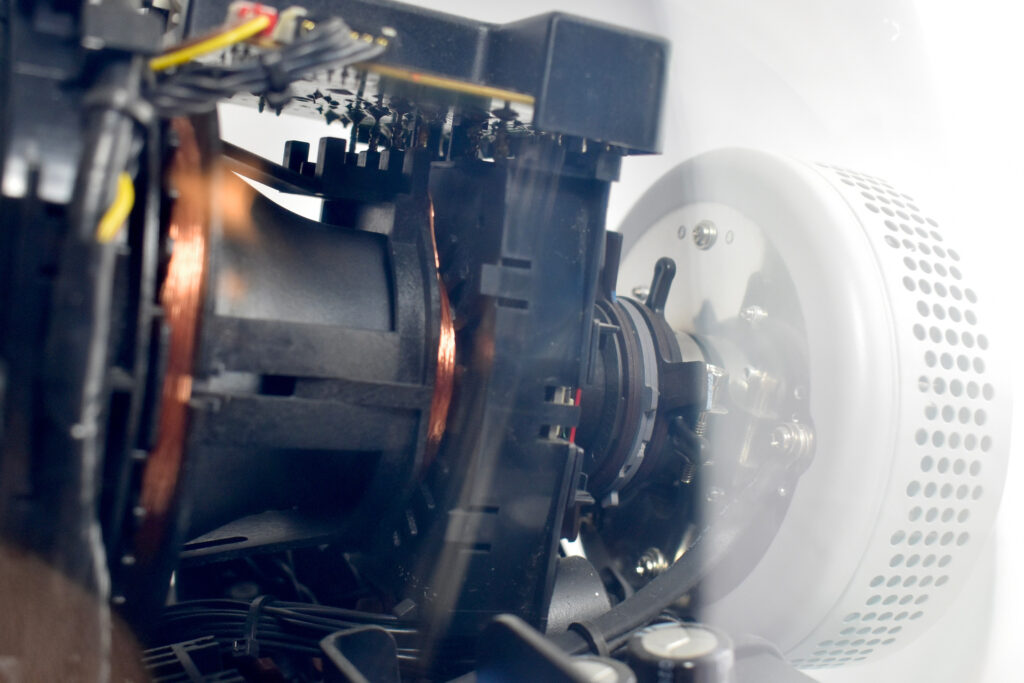
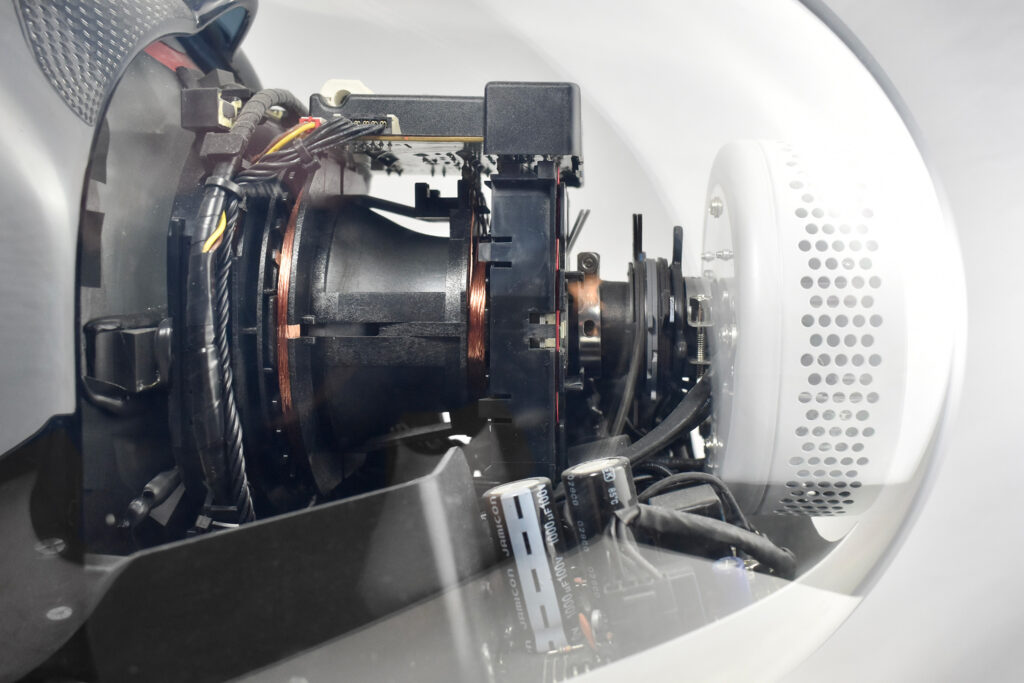
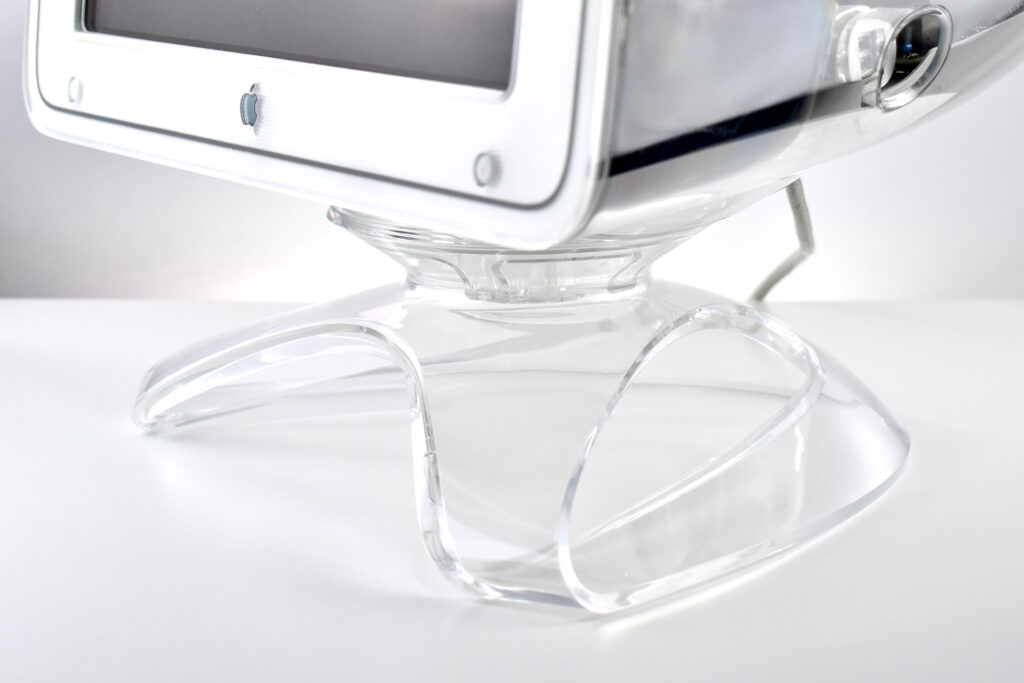
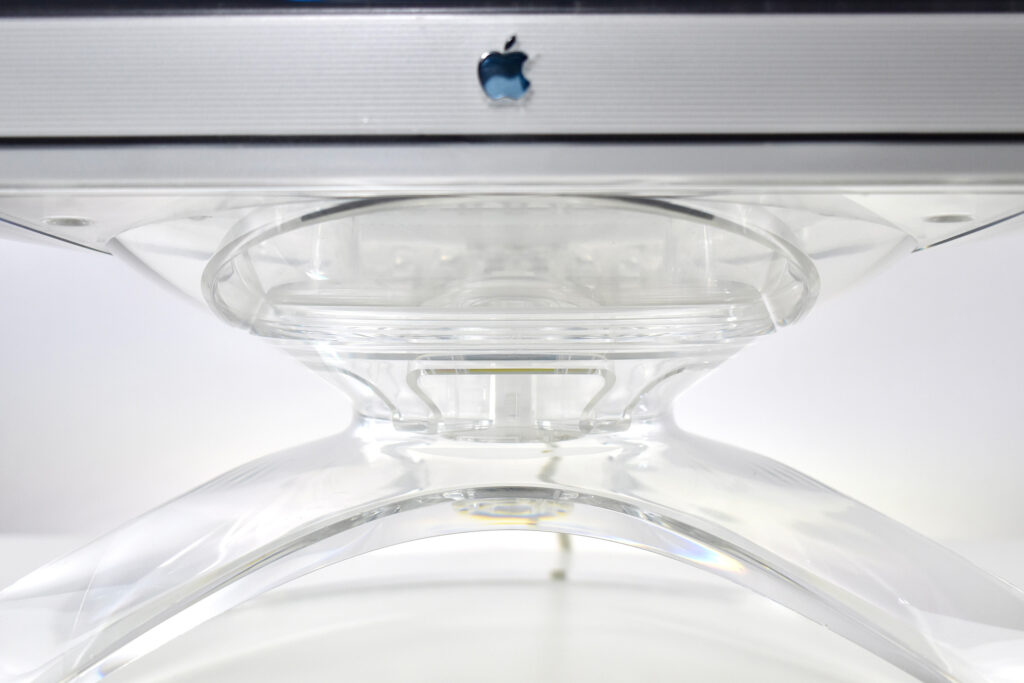
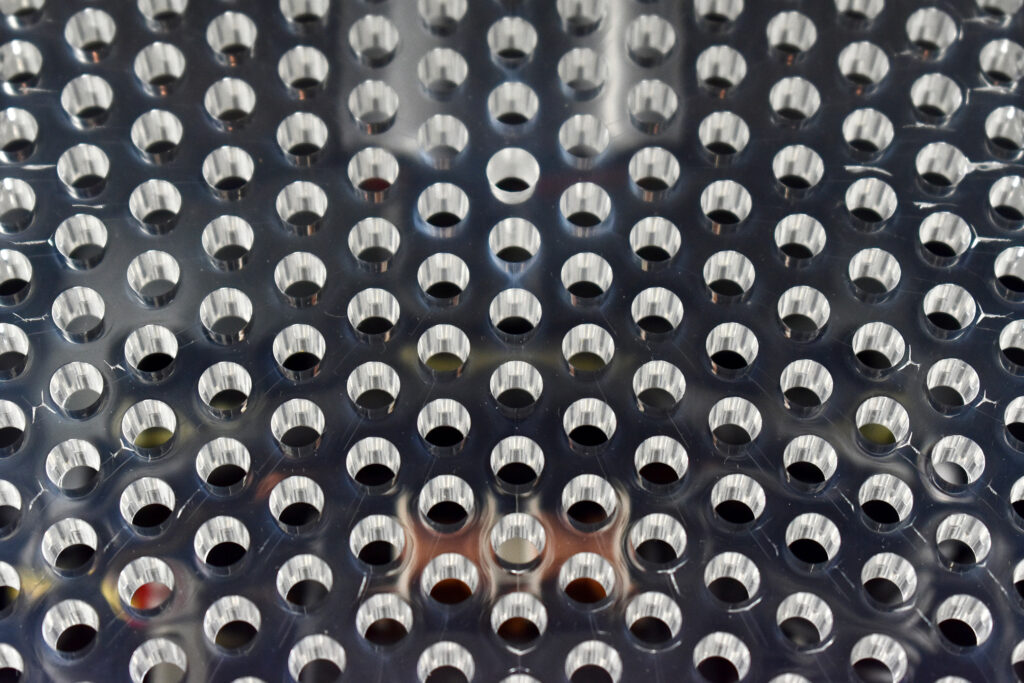
On January 9, 2004, HP’s then-CEO, Carly Fiorina, announced an “iPod+HP” partnership between Apple and HP. The first iPod+HP device was this Generation 4 iPod, available with 20GB and 40GB of storage. Three more iPod+HP models were added during the partnership, including iPod mini, iPod photo, and iPod shuffle.
During her speech at the Consumer Electronics Show, Fiorina announced the partnership and held up an example Generation 4 iPod+HP device, reporting that the Apple iPod from HP would be sold in a custom “HP blue” color, a powdery shade of blue resembling the color of faded denim. Based upon the demo unit she held, the iPod front and scroll wheel were blue, while the back remained polished chrome. When the iPod+HP device was released, it was not offered in blue, but remained white. However, the back of the device was engraved with the Apple logo, the word “iPod,” and the “HP invent” logo.
According to the Stories of Apple website, “this was the first (and only) iPod license ever allowed: Apple would manufacture a version of the iPod for HP and the iTunes software would be pre-installed on all HP Pavilion and Compaq Presario computers.” The partnership was not successful and was terminated after 18 months.
Regarding the iPod+HP design and functionality, the device was very similar to the Apple iPod Generation 4 sold by Apple at the time. According to EveryMac: “There is extremely little difference between Windows-compatible Apple iPods and the corresponding models that were offered from Hewlett-Packard. Each are identicial except HP added an HP logo below the Apple logo on the back of each player and shipped their models in a box that matched the design of other HP products.”
This model originally contained a 20GB or 40GB 4200RPM ATA-66 hard drive that could hold 5,000 or 10,000 songs. It uses a ClickWheel for navigation and has a 2-inch grayscale screen at 160×128 resolution. Its battery supported up to 12 hours of continuous music playback with features including Shuffle, voice record, games, and an alarm clock.
Perhaps to make up for the inexplicably non-blue iPod color offering, HP used its extensive printer and printing accessory experience to sell “HP printable tattoos” for the iPod. An HP press release reported, “Digital music enthusiasts can now personalize the look of their Apple iPod from HP as easily as they customize their playlists with the launch of HP Printable Tattoos.” The stickers were butterfly-shaped and included both pre-printed designs and blank sheets so “digital music enthusiasts” could design their own iPod skins.
This iPod+HP model originally contained a 20GB hard drive; however, this device has been retrofitted with a new battery and flash memory storage.
My collection also includes this same model with the original hard drive intact. This iPod is in slightly worse condition than the example shown here. I acquired the non-retrofitted iPod in late 2023.
Sources: EveryMac (FAQ, specifications), Wikipedia, iLounge, HP, Stories of Apple
